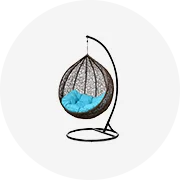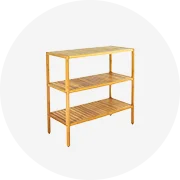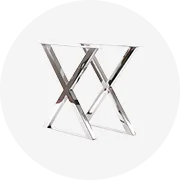Types of Single Bed Extenders
A single bed extender is designed to increase the length of a single bed to accommodate taller sleepers. Understanding the different types available helps you choose the most suitable option for your needs.
Adjustable Bed Extender
This universally designed extender can be adjusted to fit different sizes of single beds. The width and length can be modified by adding or removing detachable extension pieces, making it compatible with various single bed dimensions.
Best for: Various bed sizes, versatile use, growing children
Foam Bed Extender
A simple foam block placed at the foot of the bed. These one-piece extenders typically measure 6 inches wide and 36 inches long, with thicknesses ranging from 4-6 inches. Two foam extenders can be placed side by side to create a wider sleeping surface.
Best for: Cost-effectiveness, comfort, easy installation
Bed Bridge
Designed to connect two single beds to create a larger sleeping surface. Placed between the beds, it includes straps that wrap around the mattresses to prevent movement and maintain stability during use.
Best for: Guest rooms, convertible sleeping arrangements, couples
Inflatable Bed Extender
Similar to foam extenders but inflatable for easier storage. Placed at the foot of the bed to increase length, they provide additional comfort for taller individuals who might otherwise experience discomfort or back pain.
Best for: Occasional use, space-saving storage, adjustable firmness
Popularity Comparison of Bed Extender Types
Expert Tip: When choosing between foam and inflatable bed extenders, consider that foam offers consistent support but takes up more storage space, while inflatable options save space but may require occasional re-inflation.
| Extender Type | Installation Difficulty | Durability | Comfort Level | Best Use Case |
|---|---|---|---|---|
| Adjustable Bed Extender | Moderate | High | High | Growing children, different bed sizes |
| Foam Bed Extender | Easy | Medium | Medium-High | Budget-conscious buyers, occasional use |
| Bed Bridge | Easy | Medium | Medium | Guest rooms, temporary arrangements |
| Inflatable Bed Extender | Easy | Low-Medium | Medium | Infrequent use, limited storage space |
Specifications and Maintenance of Single Bed Extenders
Key Specifications
Size and Dimensions
Bed extenders come in various dimensions to match different mattress sizes (twin, full, queen). The length, width, and thickness should correspond to the mattress specifications for optimal fit and comfort.
Standard dimensions: 6-12" width × 36-48" length × 4-6" thickness
Material
High-quality materials ensure durability and comfort. Common options include memory foam (body-conforming support), polyester (breathable and soft), and cotton (hypoallergenic and breathable).
Most durable: High-density memory foam or polyurethane
Weight Capacity
Single bed extenders typically support weights between 150-250 pounds without sinking or losing shape. Proper weight distribution is essential for comfort and preventing damage.
Safety margin: Choose capacity 20% above actual needs
| Feature | Description | Importance |
|---|---|---|
| Design & Construction | Portable, lightweight, compact design with easy setup. Some feature straps or Velcro for secure attachment to the mattress. | High |
| Compatibility | Ability to work with different mattress types. Some extenders are designed specifically for foam, spring, or hybrid mattresses. | Critical |
| Portability | Ease of moving, folding, or rolling up the extender for storage or travel purposes. | Medium |
| Cover Material | Washable, breathable fabrics that are hypoallergenic and resist dust mites and allergens. | Medium-High |
Maintenance Guidelines
Proper maintenance extends the lifespan of your bed extender and ensures optimal performance:
- Regular Washing: Follow manufacturer's instructions for cleaning. Many extenders have removable, machine-washable covers.
- Spot Cleaning: For non-removable covers, immediately blot spills with a clean cloth, then clean with mild detergent and water.
- Thorough Drying: Ensure complete drying before use to prevent mold growth and unpleasant odors. Avoid direct sunlight to prevent material damage.
- Regular Fluffing: Maintain the original shape by fluffing the extender to prevent lumps and ensure consistent comfort.
- Proper Storage: When not in use, store in a dry place away from direct sunlight to maintain quality and extend lifespan.
Warning: Never use harsh chemicals or bleach on bed extenders as these can damage the materials and potentially cause skin irritation. Always check manufacturer guidelines before using any cleaning products.
How to Choose the Right Single Bed Extender
Selecting the appropriate bed extender requires consideration of several important factors to ensure safety, comfort, and longevity:
Age Considerations
For children, consider their growth rate and whether the extender will accommodate them as they grow. Toddlers may only need safety rails, while pre-teens and teens require more substantial extensions for comfort.
Recommendation: Adjustable extenders for growing children
Bed Size Compatibility
Ensure the extender fits properly against your specific bed size (twin, full, etc.) to prevent dangerous gaps. Measure your bed dimensions carefully before purchasing.
Measurement tip: Include the frame in your measurements
Material Quality
Different materials offer varying benefits: wood (natural, durable), metal (strong, long-lasting), or high-density foam (comfortable, supportive). Consider durability, safety, and comfort in your selection.
Longest lasting: Metal frames with quality foam padding
Expert Advice: For maximum comfort and seamless integration with your existing bed, choose an extender made from materials similar to your mattress. This creates a more uniform sleep surface and reduces the feeling of a "gap" between the mattress and extender.
Additional Selection Criteria
| Selection Factor | What to Consider | Why It Matters |
|---|---|---|
| Type of Extender | Bed rails, mattress extenders, or bed bridges based on your specific needs | Different types serve different purposes - safety, comfort, or creating larger sleep surfaces |
| Ease of Installation | Whether the extender requires tools, complex assembly, or can be set up quickly | Simpler installation saves time and reduces frustration for busy households |
| Weight Capacity | Maximum weight the extender can safely support | Ensures safety and prevents damage or collapse during use |
| Price Range | Budget considerations versus quality and durability needs | Higher quality often means longer lifespan but comes at a premium price |
| Safety Features | Secure attachment mechanisms, non-slip surfaces, rounded edges | Prevents accidents, particularly important for children's beds |
DIY Installation and Replacement of Single Bed Extenders
Installing a bed extender can be a straightforward DIY project with the right approach. Follow these steps for a successful installation:
- Choose the Right Extender: Select an extender that's compatible with your single bed. Consider the type (bed bridge, foam pad, adjustable rail) based on your specific needs and ease of installation.
- Gather Tools and Materials: Have necessary tools ready according to the manufacturer's instructions. Common tools include screwdrivers, wrenches, and measuring tape.
- Prepare the Bed: Remove all bedding and clear the area around the bed for easier access and safer installation. Ensure the work area is well-lit.
- Follow Installation Instructions: Carefully read and follow the manufacturer's instructions. Different extenders have unique installation processes that must be followed precisely.
- Secure All Components: Ensure all parts are tightly fastened. For bed bridges, position between mattresses and attach to the bed frame with provided hardware. For foam extenders, place them firmly at the foot of the bed.
- Test Stability and Comfort: After installation, test the extender by applying pressure and lying on the bed. Check for gaps, wobbling, or uncomfortable transitions between the mattress and extender.
- Make Necessary Adjustments: If you notice any issues, make adjustments to improve stability and comfort. Tighten screws or reposition the extender as needed.
- Replace Bedding: Once satisfied with the installation, replace all bedding, ensuring sheets properly cover both the mattress and extender for a seamless sleeping surface.
Safety Note: Always verify weight capacity before use. An improperly installed or overloaded bed extender can pose safety risks. Double-check all fasteners and attachment points before regular use.
Installation Tip: For foam or inflatable extenders, consider using a non-slip mat between the extender and bed frame to prevent movement during sleep. This simple addition significantly improves stability and comfort.
Frequently Asked Questions
Anyone can use a bed extender, but they're particularly beneficial for:
- Parents with growing children who are too tall for standard beds
- Tall adults who find standard bed lengths uncomfortable
- Households with large pets that share the bed
- People with limited space who need temporary sleeping arrangements for guests
- Those looking to extend the life of their current mattress rather than purchasing a longer bed
Bed extenders are available from various retailers:
- Online marketplaces like Amazon, eBay, and Alibaba.com
- Furniture and bedding specialty stores
- Department stores with home goods sections
- Baby and children's furniture stores (especially for safety rail types)
- Direct from manufacturers' websites for specialty or custom options
Prices typically range from $30-$150 depending on type, quality, and materials.
Bed extenders can be used on most beds, but there are important considerations:
- Each extender type is designed for specific bed styles (platform, box spring, etc.)
- The bed frame must be structurally sound to support the extender
- Some extenders work best with specific mattress materials (memory foam, innerspring)
- Bed size must match the extender specifications for proper fit and safety
- Weight limits vary by model and should be carefully observed
Always check the manufacturer's compatibility guidelines before purchasing.
The lifespan of a bed extender depends on several factors:
- Material quality: High-density foam and metal frame extenders typically last 3-5 years
- Frequency of use: Daily use will wear extenders faster than occasional use
- Weight applied: Staying within recommended weight limits extends longevity
- Maintenance: Properly maintained extenders with regular cleaning last significantly longer
- Storage conditions: Proper storage when not in use prevents premature deterioration
With proper care, quality bed extenders can last for several years before needing replacement.
Bed extenders can be safe for children when certain precautions are taken:
- Choose extenders specifically designed with child safety in mind
- Ensure secure attachment to prevent gaps where a child could become trapped
- Regularly check for loose components or wear that could create hazards
- For younger children, consider extenders with integrated safety rails
- Follow all manufacturer age and weight recommendations
Always prioritize models with safety certifications when purchasing for children's use.

























































